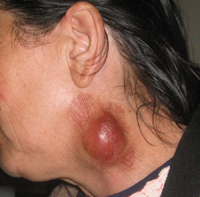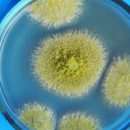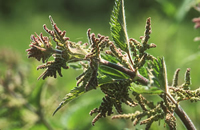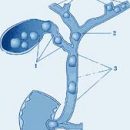What is Tularemia? What are the symptoms of Tularemia? How treatment and prophylaxis of Tularemia? Answers to these questions you will find in the article.
Content
Tularemia
Tulara'yia - zoonotic infection having a natural foci.
Characterized by intoxication, fever, lesion of lymphatic
nodes. Disease pathogen - small bacterium. When heated to 60C
dies after 5-10 minutes. Tulyrerey's tanks - hare,
Rabbits, Water Rats, Polels. In natural foci periodically
Epizootia arise.
animals (hunting), or through infected food and water, less often
aspiration (when processing grain and fodder products,
Wholeness of bread), bloodsowing insects (blind, tick, mosquito, etc.).
What are the symptoms of Tularemia
period from a few hours to 3-7 days. Distinguish bubonic, pulmonary and
generalized (common in the body) forms. Disease
It begins acutely with a sudden rise of temperature to 38.5-40 degrees
WITH. A sharp headache appears, dizziness, pain in the muscles of the legs,
back and lumbar region, loss of appetite. In severe cases can
be vomiting, nasal bleeding. Characterized pronounced sweating,
Sleep impairment in the form of insomnia or on the contrary. Often
There is an euphoria and an increase in activity against high temperature.
Marked redness and swelling of the face and conjunctiva in the first days
Diseases. Later on the mucous membrane of the oral cavity appear point
Hemorrhage. Language is covered with a gray rode. Characteristic sign -
the increase in various lymph nodes, the dimensions of which can be
Mustains to walnut.

From the cardiovascular system, bradycardia is celebrated,
hypotension. In the blood of leukocytosis with moderate neutrophilic shift.
Liver, spleen increases not in all cases. Stomach ache
Possible with a significant increase in mesenterical lymphatic
nodes. Fever lasts from b to 30 days.
leaving the trace, after 2-3 days of the disease develops regional
Lymphadenit. Buboons are little painful and have clear contours of up to 5
cm. Subsequently, either the softening of the bubon (1-4 months.), either
Its spontaneous autopsy with the release of thick creamy pus
and the formation of tularemia fistula. Mortar is more striking,
Inguinal and femoral lymph nodes.
The ulcer-bubonic form is characterized by the presence of primary lesion at the site of the entrance gate of infection.
mucous membranes of the eye. Typically the appearance of follicular growths
Yellow color size to seed grain at conjunctiva.
Bubon is developing in the parole or submandibular areas, the course of the disease is long.
mucous membrane almonds, usually one. Occurs in the food path
infection.
organs. Pulmonary form - more often registered in the autumn-winter period.
The generalized form proceeds by the type of general infection with pronounced
toxicosis, loss of consciousness, nonsense, strong head and muscular
pools.
Pneumonia, peritonitis, pericarditis, meningoencephalitis), as well as abscesses,
Gangrena due to secondary bacterial flora.
Diagnostics is based on a leather-allergic sample and serological reactions.
Treatment and Prevention of Tularemia
The leading place is given to antibacterial drugs (tetracycline,
aminoglycosides, streptomycin, levomycetin), treatment is carried out up to 5 days
Normal temperature. With prolonged forms use
Combined antibiotic treatment with a vaccine that is introduced
intracudino, intramuscularly at a dose of 1-15 million microbial bodies for transactions with
3-5 days intervals, treatment course 6-10 sessions. Recommended
Vitamin therapy, repeated transfusions of donor blood. When appearance
Bubon Fluctuations - Surgical Intervention (Wide cut to
Empty Bubon). Patients are discharged from the hospital after complete
Clinical recovery.
natural foci or reduction of their territories. Protection of housing, wells,
Open reservoirs, products from miserable rodents. Holding
Mass planned vaccination in Tularemia foci.









